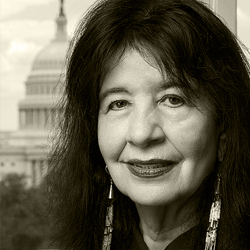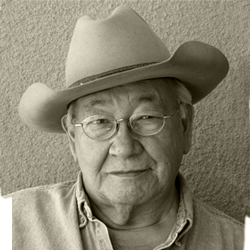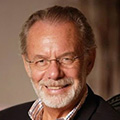Poetry is the art of encapsulating the essence of human emotions, ideas, and experiences and channeling them through the nuanced tools of both the written word and spoken language.
It gives voice and shape to feelings too complex to express in a single word. It passes down virtues, lessons, and warnings to future generations. It softens hearts, opens minds, and can be a transformative tool for healing, spurring action, and sparking lasting change.
The masters of this art form, to which our state is home to many, have dedicated their lives to it and have put Oklahoma on the map as a landmark of influence in the world of poetry.
We’ve had the honor of interviewing some of these incredible poets and their family members to gain a truly unique, first-hand look into their lives, their thought processes, and what fuels the creative genius that they draw upon in their work.
Together, as we journey through the lives and lessons of these incredible poets, we’ll gain a greater appreciation for their work, understand their dedication to the art form, and learn what lessons we can glean from their legacies should you strive to become the next influential Oklahoma poet.
Joy Harjo: The First Native American U.S. Poet Laureate
An American Sunrise
We were running out of breath, as we ran out to meet ourselves. We were surfacing the edge of our ancestors’ fights, and ready to strike. It was difficult to lose days in the Indian bar if you were straight. Easy if you played pool and drank to remember to forget. We made plans to be professional — and did. And some of us could sing so we drummed a fire-lit pathway up to those starry stars. Sin was invented by the Christians, as was the Devil, we sang. We were the heathens, but needed to be saved from them — thin chance. We knew we were all related in this story, a little gin will clarify the dark and make us all feel like dancing. We had something to do with the origins of blues and jazz I argued with a Pueblo as I filled the jukebox with dimes in June, forty years later and we still want justice. We are still America. We know the rumors of our demise. We spit them out. They die soon.
Joy Harjo is widely regarded as one of the most influential poets of our era. Hailing from the Muscogee (Creek) Nation, she is the first Native American U.S. Poet Laureate -- not to mention a stunningly-accomplished singer, songwriter, musician, playwright, and author -- and has dedicated her life to creating.
But her talent didn’t bloom naturally. Like many great artists, Harjo faced adversity and nay-sayers all throughout her life, even from an early age, when her stepfather forbade her from signing in the home.
“I was always drawing from day one. I was always drawing and painting. The music thing…I loved music in school and then I guess when I was about 15 or 16, because of my stepfather, I stopped all of it and didn’t pick it up until much later.
He forbid me to sing in the house. Usually I didn’t sing when he was there anyway. There was no music because he was so oppressive that when he came home, everything stopped, everything got quiet.”
— Joy Harjo
Chapter 3
Though facing creative suppression from her stepfather, Harjo had strong women throughout her family that helped her embrace her natural talents and artistic curiosity.
Her mother, who had formerly enjoyed songwriting and singing, was joined in bolstering Harjo’s creative drive alongside Harjo’s Aunt Louis, a painter whom she credits for teaching her so much about artistry and creation.
Drawing from their examples and lessons, especially her Aunt Lois, Harjo began to forge her own path in her artistic pursuits, leading her to the Institute of American Indian Art when she was only 16-years-old.
“I went to Indian school and that saved my life. I went to the Institute of American Indian Art when I was 16 and finished high school there. I loved it there … It was the first time in school that I felt really like I had a place, was comfortable and I loved being there.”
— Joy Harjo
Chapter 3
However, like most artists, her path wasn’t a clearly-defined straight shot, nor was it always financially easy.
“My then husband, my son’s father, always said he was looking for a job but he would never find them. We drove up in this car …the trunk lid was always falling off into the street. But we drove up and there was a job at a gas station and a guy who was running it looked at him and then looked over at me and hired me, so I went to work.”
Through her work at the gas station, Harjo was able to attend the University of New Mexico. Her major? Pre-Med.
“I went to this eight-week program at the St. Vincent’s Hospital for nursing assistants and I loved the work so much, I decided to go to pre-med.”
— Joy Harjo
Chapter 4
But, over time, her creative passions led her back to majoring in art, culminating in a Master of Fine Arts in Creative Writing from the University of Iowa in 1978. And from these educational foundations, Harjo continued to pursue her creative work, despite the criticism and negativity of those who would urge her to seek more so-called practical endeavors.
Her effort, dedication, and years of incredible poetic output led to her being chosen in 2019 by the U.S. Library of Congress as the 23rd U.S. Poet Laureate -- the first Native American person ever to hold the honor -- and being selected for 3 terms until 2022.
With countless awards, honors, and accolades for her ever-growing body of work, Harjo still harkens back to the best advice she has ever received, which she now passes down to aspiring artists, and which has spurred her onward ever since:
“It was from a Native woman from New Mexico and I remember her looking at me and saying ‘just be yourself.’
When I heard that, it was like well, yeah, yeah, I know how to do that. But on the other hand …when you be yourself, it is not always that easy. Sometimes you come up against rules. It can be difficult to be the only person doing what you’re doing.
…when I started writing poetry, people didn’t always know where to put me, but I followed what was given to me to do. It didn’t always make sense to me. When I said I was going to be a poet, it surprised me. It’s a mystery that I became a poet, but I knew something in me as I began that even though common-sense people were saying ‘How can you be a poet? You better take education classes. You know, you’ve got two children you have to care for.’
But something in me knew beyond reason that I would be taken care of because that was me, that is what I was supposed to do. And that’s important.
A lot of times we get sidetracked by what we think other people think we should be or what society thinks we should be.
I think we all came in with a kind of map.”
— Joy Harjo
Chapter 11
N. Scott Momaday: Oklahoma Centennial Poet Laureate, Pulitzer Prize-winning Author
The Snow Mare
In my dream, a blue mare loping,
Pewter on a porcelain field, away.
There are bursts of soft commotion
Where her hooves drive in the drifts,
And as dusk ebbs on the plane of night,
She shears the web of winter,
And on the far, blind side
She is no more. I behold nothing,
Wherein the mare dissolves in memory,
Beyond the burden of being.
No singular artist embodies the focus and tenacity required to be a successful creative quite like N. Scott Momaday.
Born in Lawton, Oklahoma to an artistic family -- his mother, a writer; his father, a painter -- that was rich in both storytelling and love, Momaday had a passion for writing within him from an early age.
“[My father] knew a lot of oral traditions from the Kiowa. He was a good storyteller. They were wonderful stories. I took them for granted of course, until much later in my life when I realized that they were very fragile and on the verge of extinction.
I remember him telling me stories at bedtime and I would frequently ask him to tell a certain story. I would ask him to tell some stories again and again and again… that was a rich part of my boyhood. My mother also told stories. Not from the Indian tradition so much, but stories she just made up to tell. She was a good storyteller as well.”
— N. Scott Momaday
Chapter 3
During these early years, he moved around the American southwest due to his parents’ work. In part due to his frequently changing schools, Momaday quickly honed his social skills, connecting with his peers and making new friends quickly.
Upon entering high school, Momaday began to recognize his growing calling to pursue writing more fervently. Winning poetry contests and creative writing competitions, he continued to develop his skill set, but felt he didn’t feel wholly prepared for collegiate levels of study.
Challenging himself, he enrolled in the Augusta Military Academy in Fort Defiance, Virginia for his last year of high school. It was here that he discovered his capabilities for public speaking, his ability to push himself as a student and creative, and his ability to excel under the rigors of military academy life.
Armed with this education and grit, Momaday enrolled at the University of Virginia, meeting like-minded students and influential authors, including William Faulkner and John Dos Passos.
As he pursued creative writing and poetry with an invigorated passion, he won a creative writing scholarship to attend Stanford University shortly after his graduation from the University of New Mexico.
“... that was a very important event in my life. I had graduated from the University of New Mexico and I had taken a job teaching on the Jicarilla-Apache Reservation in Dulce New Mexico.
I applied for a Stegner Fellowship at Stanford and I won it so I began my graduate career that way. I went to Stanford…
”
— N. Scott Momaday
Chapter 5
It was here, under the tutelage of legendary literature critic Yvor Winters, that Momaday grew exponentially as a writer and poet and catapulted his success as an academic. Graduating with his doctorate from Stanford, Momaday went on to teach, continue his research, and earn tenure at multiple universities, including the University of Arizona, the University of California - Santa Barbara, and the University of California - Berkeley where he created a new curriculum based on Native American literature and mythology.
It was during this time, in 1969, where Momaday published one of his most important works: House Made of Dawn, which was awarded the Pulitzer Prize for Fiction, and remains a gold standard of Native American creative literature and single-handedly kicked off a renaissance within the Native American writing community.
Though continually growing as an artist and scholar, and winning more well-deserved accolades and awards for his work, Momaday has not forgotten his roots, nor the inspiration behind his passions: to tell the stories and celebrate the culture of his people and to help pave the way for the next generation of writers.
“I say if you have the motivation, if you have the temperament, if you think that you must write, then do it with all of your strength.
Read people whose work you admire and try to understand why you admire it. Write. There’s no substitute for writing consistently.
You don’t have to write deftness prose or poetry every day, but you must strive for that. You want to do the best you can.
You have to find your voice and once you’ve found it, you must be true to it. It’s not easy. Writing can be very frustrating. You’ll find that out if you go along the path, but it is worth it. It’s worth everything.”
— N. Scott Momaday
Chapter 16
Key Lessons from These Famous Oklahoma Poets
As we’ve journeyed through the lives of these famous Oklahoma poets, let’s reflect on the key takeaways we gathered:
1. Being a poet means staying true to yourself and your goals.
Just as Joy Harjo taught us, aspiring poets are going to have many people throughout their lives reminding them of how seemingly insignificant and impractical the work and impact of a poet is.
But if pursuing poetry is what feels right to you and lights a spark within your heart, protect it, and pursue your dream.
2. Being a poet isn’t easy.
Despite the creativity and prowess of the poets we’ve learned from in this piece, all of them had responsibilities, struggles, and hurdles throughout their life. Their professional careers included many varied roles outside of poetry. While over time and after great effort they were able to live off of the fruits of their creative work, it didn’t come instantly. It took decades of continuous effort both within and outside of their chosen creative fields.
3. Being a poet means being consistent in your effort.
As N. Scott Momaday taught us, there’s no substitute for continuous effort and practice at your chosen craft.
Though the dedication and grit required is a heavy toll, it’s one every influential Oklahoman has paid.
4. Seek out the help and tutelage of skilled practitioners in your field.
Looking to others for guidance -- be they academics, other artists, or teachers -- is never a sign of ineptitude as a poet.
When pursuing a goal and seeking growth as a professional in any field, never shy away from asking questions or, when needed, asking for help.
Thank You for Reading
Whether you’re an aspiring poet, an educator, or a fellow lover of Oklahoma history, thank you for reading. Readers like you and your generous gifts are what help us continue our mission to preserve Oklahoma’s history one voice at a time.


